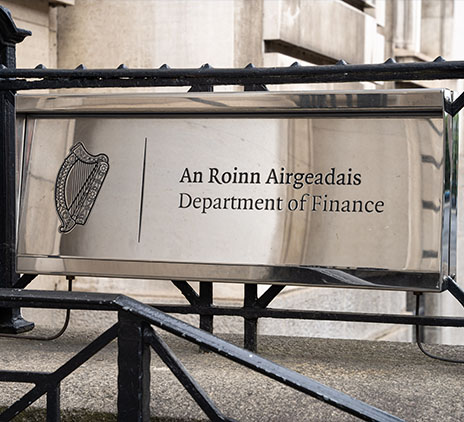-
Aviation Advisory
Our dedicated Aviation Advisory team bring best-in-class expertise across modelling, lease management, financial accounting and transaction execution as well as technical services completed by certified engineers.
-
Consulting
Our Consulting team guarantees quick turnarounds, lower partner-to-staff ratio than most and superior results delivered on a range of services.
-
Business Risk Services
Our Business Risk Services team deliver practical and pragmatic solutions that support clients in growing and protecting the inherent value of their businesses.
-
Deal Advisory
Our experienced Deal Advisory team has provided a range of transaction, valuation, deal advisory and restructuring services to clients for the past two decades.
-
Forensic Accounting
Our Forensic and Investigation Services team have targeted solutions to solve difficult challenges - making the difference between finding the truth or being left in the dark.
-
Financial Accounting and Advisory
Our FAAS team designs and implements creative solutions for organisations expanding into new markets or undertaking functional financial transformations.
-
Restructuring
Grant Thornton is Ireland’s leading provider of insolvency and corporate recovery solutions.
-
Risk Advisory
Our Risk Advisory team delivers innovative solutions and strategic insights for the Financial Services sector, addressing disruptive forces, regulatory changes, and emerging trends to enhance risk management and foster competitive advantage.
-
Sustainability Advisory
Our Sustainability Advisory team works with clients to accelerate their sustainability journey through innovative and pragmatic solutions.

-
 Asset management Asset management of the futureIn today’s global asset management landscape, there is an almost constant onslaught of change and complexity. To combat such complex change, asset managers need a consolidated approach. Read our publication and find out more about what you can achieve by choosing to work with us.
Asset management Asset management of the futureIn today’s global asset management landscape, there is an almost constant onslaught of change and complexity. To combat such complex change, asset managers need a consolidated approach. Read our publication and find out more about what you can achieve by choosing to work with us. -
 Internal Audit Maintaining Compliance with New EU Pension Directive IORP IIOn 28 April 2021, the Irish Government transposed IORP II (Institution for Occupational Retirement Provision), an EU directive on the activities and supervision of pension schemes, into law.
Internal Audit Maintaining Compliance with New EU Pension Directive IORP IIOn 28 April 2021, the Irish Government transposed IORP II (Institution for Occupational Retirement Provision), an EU directive on the activities and supervision of pension schemes, into law. -
 Risk, Compliance and Professional Standards FRED 82 – Periodic Updates to FRS 100 – 105The concept of a new suite of standards for the UK and Ireland, aligning with international financial reporting standards, was first conceived in 2002
Risk, Compliance and Professional Standards FRED 82 – Periodic Updates to FRS 100 – 105The concept of a new suite of standards for the UK and Ireland, aligning with international financial reporting standards, was first conceived in 2002 -
 Audit and Assurance Auditor transition: how to achieve a smooth changeoverAppointing new auditors may seem like a daunting task that will be disruptive to your business and a drain on the finance function. Nevertheless, there are a multitude of reasons to consider a change, including simply seeking a ‘fresh look’ at the business.
Audit and Assurance Auditor transition: how to achieve a smooth changeoverAppointing new auditors may seem like a daunting task that will be disruptive to your business and a drain on the finance function. Nevertheless, there are a multitude of reasons to consider a change, including simply seeking a ‘fresh look’ at the business.
-
Corporate Tax
Our Corporate Tax team is made up of more than 40 highly experienced senior partners and directors who work directly with a wide range of domestic and international clients; covering Corporation Tax, Company Secretarial, Employer Solutions, Global Mobility and Tax Incentives.
-
Financial Services Tax
The Grant Thornton team is made up of experts who are fully up to date in terms of changing and evolving tax legislation. This is combined with industry expertise and an in-depth knowledge of the evolving financial services regulatory landscape.
-
Indirect Tax Advisory & Compliance
Grant Thornton’s team of indirect tax specialists helps a range of clients across a variety of sectors including pharmaceuticals, financial services, construction and property and food to navigate these complexities.
-
International Tax
We develop close relationships with clients in order to gain a deep understanding of their businesses to ensure they make the right operational decisions. The wrong decision on how a company sells into a new market or establishes a new subsidiary can have major tax implications.
-
Private Client
Grant Thornton’s Private Client Services team can advise you on all areas of financial, pension, investment, succession and inheritance planning. We understand that each individual’s circumstances are different to the next and we tailor our services to suit your specific needs.

The Central Bank of Ireland (CBI) published its consultation paper on regulations and guidelines for pre-emptive recovery planning for re(insurers)on 25 June 2020. The consultation process is open for feedback until 30 October 2020.
Background
Recovery planning is an essential component of resolution in the banking sector since the establishment of the Banking Recovery and Resolution Directive (BRRD) in 2014. As outlined in our previously published article, Recovery planning for insurers, it is a key aim for EU Authorities to establish a crisis management framework for managing institutions running into financial distress.
The CBI has now set out, by way of these regulations and guidelines, their expectations for (re)insurance undertakings in preparing their pre-emptive recovery plans. The regulations core objectives are to ensure that (re)insurance institutions put in place an effective recovery framework which will enhance policyholder protection, as well as maintaining financial stability and reduce the probability of insurers failing to sustain the objectives of the Solvency II (SII) framework.
What is required by institutions in scope?
(Re)insurance undertakings (‘institutions in scope’) are expected to draw up and maintain a pre-emptive recovery plan providing for measures to be taken by the insurer to restore its financial and solvency position following a significant deterioration. There is clear connection with ORSA and an opportunity to leverage existing ORSA processes.
The recovery planning regulations require that pre-emptive recovery plans include the following components: governance, strategic analysis, recovery indicators, recovery options, scenario analysis, communication plan and information on preparatory measures. Each component is described below.
Governance
The Central Bank’s expectation is that recovery planning is integrated into the normal system of governance and risk management framework for the relevant institutions in scope.
The regulations outline a number of governance related activities that the institutions in scope must ensure are in place and clearly documented within the recovery plan; these ranges from the policies and procedures to be in place to the actual review and approval process or recovery plans.
Strategic Analysis
Institutions in scope should include details in respect to strategic analysis undertaken. This strategic analysis should take into account of the nature, scale and complexity of the insurers business and enable insurers to identify any vulnerabilities or impediments that may impact recovery.
Key items to consider when conducting the strategic analysis include:
- Risk strategy;
- Operating model;
- Core business lines, key services and critical functions; and
- External and internal interconnectedness (from an operational, legal and financial standpoint)
The analysis should identify the core business lines, key services and critical functions to be maintained in a situation of financial distress.
Recovery Indicators
Recovery Indicators are fundamental to ensuring the institution in scope is in a position to monitor the development and progression of key risks (and relative breach of a recovery indicator limit or threshold) so that if redeployment of a recovery option is necessary it can be implemented in a sufficient and effective timely manner.
The framework for recovery indicators should be adapted to the business model of the institution in scope and be adequate to its risk profile; to this extent it is essential that the recovery indicators are calibrated in alignment with the risk appetite statement of the relevant risk indicators
In line with best practice, the suite of recovery indicators (and their calibration) should be reviewed on an annual basis to ensure that the alignment between the indicators and the business strategy of the institution in scope is guaranteed.
Insurers should consider including specific categories of recovery indicators covering the following areas: solvency, liquidity, profitability, reserving, market-based and macroeconomic indicators.
Recovery Options
Recovery options should identify and assess the range of actions that the insurer may take in order to restore its financial position or maintain its ongoing viability in the event of a severe stress event.
Recovery options may include actions required to maintain the viability and/or financial and solvency position of the insurer which have as their primary aim of ensuring the viability of core business lines and key services which maintain critical functions. Recovery options should include an impact and feasibility assessment as well as documenting how continuity of operations will be ensured when implementing each recovery option.
The impact assessment for each of the recovery options should be assessed under two different lenses: qualitative (e.g. operational and organisational impact) and quantitative (e.g. financial impact on the recovery indicators); it should be also used as the basis for the feasibility assessment and potential impediments of each recovery option.
Scenario Analysis
Scenario analysis should test the effectiveness of the recovery options as well as the adequacy of recovery indicators under a range of scenarios of financial or operational stress.
In considering scenarios to use, institutions in scope must ensure scenarios include the following;
- A system wide scenario - This scenario would consider an event that would have a systemic risk to the financial system or real economy
- An insurer specific scenario – This would comprise of an event that would risk significant negative consequences on the insurer
- A scenario that involves a system wide and insurance specific scenario occurring simultaneously; and
- A scenario where the insurer is closed to new business but continues to honour, in full or in part, agreements made prior to that date
Institutions in scope should assess their scenario analysis by analysing the impact of each scenario on the insurer which focusses on the insurers’ solvency, liquidity, profitability, risk profile and operations while also taking into account the impact of recovery options implemented as a result of the recovery indicator thresholds that are expected to be triggered.
Furthermore, institutions in scope must ensure that they have an effective process for identification of the respective scenarios and have a robust process embedded for testing and reporting the results of these scenarios.
Communication Plan
The proposed regulations require that institutions’ recovery plans must include a communication and disclosure plan which should take account of their internal and external communication approach, when activating the recovery plan and any subsequent recovery option initiation, as well as appropriate consideration for managing any potential negative market reaction.
A comprehensive external communication plan should also consider and take account of all the necessary external stakeholders including shareholders, the Central Bank, policyholders, counterparties, financial markets and the general public as appropriate.
Preparatory measures
Information regarding preparatory measures would be necessary in order to identify the arrangements (e.g. governance, financial, operational, etc.) that are identified by institutions in scope in order to further enable the implementation of the selected recovery options in a stressed scenario.
Why Grant Thornton?
Grant Thornton Prudential Risk, insurance and actuarial advisory experts assist a diverse range of financial institutions in the interpretation and the completion of their recovery planning requirements. Our team has extensive knowledge of the legislation and guidance underpinning recovery planning, supervisor’s expectations and also has a proven track record of assisting institutions with reviewing and drafting their recovery plans.
Our experts could help insurers get prepared for recovery planning by leveraging the unrivalled expertise gained by advising domestic and international banks and investment firms.











